It’s that time of the year… the trees are changing color, and soon after, the leaves will come! Whether you dread fall yard cleaning or look forward to it, I will walk you through why the best thing you can do for your yard and neighborhood…is nothing!
You heard me right- minimal or NO fall cleanup is one of the best things you can do to support local wildlife and your plants. Find out why we’re practicing “Leaving the Leaves” at the Gardens this Fall.
What Do We Mean?
When we say “Leave the Leaves,” it means precisely that- not raking or blowing leaves out of your yard and flower beds or running leaves through a mulching mower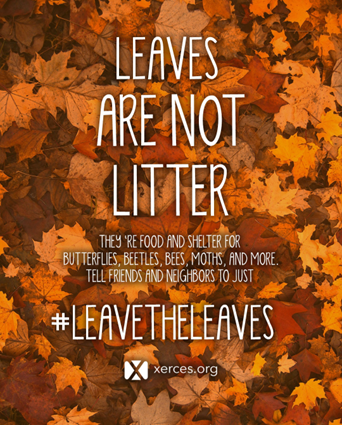 to help them break down faster. While using a mulching mower can help break the leaves down into smaller pieces, it will also shred any insect eggs or larvae in the process- but more on that later.
to help them break down faster. While using a mulching mower can help break the leaves down into smaller pieces, it will also shred any insect eggs or larvae in the process- but more on that later.
Leaves and fall garden clean-up can be left until there is no more danger of frost in the Spring- which is the perfect time to get your garden ready for planting anyway! By then, many insects have hatched out or emerged from their winter burrows, so they no longer need leaf protection. But even though you can clear your leaves then, consider that they also have benefits such as being a natural fertilizer and ground cover to block weed seed germination- so you might still want to leave some. For more on Spring Cleanup timing- check out this article by the Xerces Society: https://xerces.org/blog/dont-spring-into-garden-cleanup-too-soon.
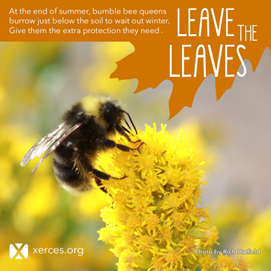 Why Should I Do It? (Or, Yay! Reasons to Not Rake Leaves!)
Why Should I Do It? (Or, Yay! Reasons to Not Rake Leaves!)
Did you know that certain insects like Luna Moths, Fritillary Butterflies, and Fireflies can’t live through their pupal or larval stages without leaves? These tiny friends need leaves to lay their eggs or create their chrysalises (Xerces Society). Without leaves, they have no home! This is also why using a mulching mower can harm these same species. Other species of beetles, butterflies, moths, and bees get extra winter protection from the insulated layer that leaves create.
Your garden perennials also benefit. A layer of leaves will create extra insulation against harsh winter temperatures, letting natural fungi and microorganisms decompose the leaves and turning them into one of nature’s best natural and organic fertilizers.
We have all heard that leaves left on turf will harm it. While that can be true, if the leaf or mulched leaf layer is no thicker than one inch or if your turf grass goes dormant in the winter, your turf grass will not be harmed. The reason simply being that grass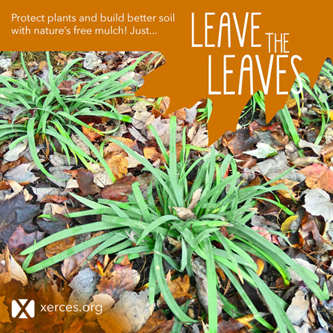 needs a lot of sunlight, so leaves thicker than 1 inch would block too much light and cause the grass to die. However, because we are so far north, many turf grass species go dormant in the winter anyway- meaning they don’t need the sunlight until they are ready to emerge in the Spring. If your grass has already died down (which likely has not happened yet), then feel free to let the leaves be!
needs a lot of sunlight, so leaves thicker than 1 inch would block too much light and cause the grass to die. However, because we are so far north, many turf grass species go dormant in the winter anyway- meaning they don’t need the sunlight until they are ready to emerge in the Spring. If your grass has already died down (which likely has not happened yet), then feel free to let the leaves be!
The other place you should remove leaves is above any pavement or walkway. Wet leaves can be more slippery than ice! To keep yourself and others safe, we recommend keeping walkways clear.
What if my HOA or City Requires Leaf Removal?
Unfortunately, many areas are still stuck in old-fashioned ideals of the perfect lawn (which benefits nobody). In this case, you can remove leaves from your turf area but deposit them into any garden bed space or at the base of your trees. Unlike grass, these plants can handle several inches of leaves without danger to the plant’s health (Xerces Society). Leaves can also be added to a compost pile, but too many could slow down your composting process.
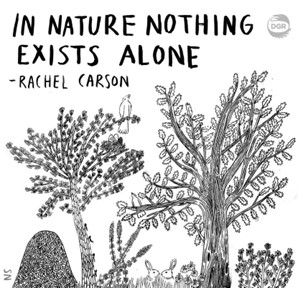 At The Gardens…
At The Gardens…
In conclusion, if you see some leaves piled around Monk Botanical Gardens this Fall and Winter, it’s not because we are being lazy! Instead, we are doing our best to help our garden critters and educate visitors!
Written by Cora Borgens, Horticulture Manager


